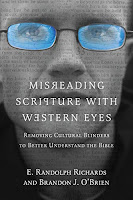For the last several weeks, we've peeked at the history of the early church in Africa and the Middle East, based on A Multitude of All Peoples: Engaging Ancient Christianity's Global Identity by Vince L. Bantu.
I say "peeked" because I just choose small things that stood out to me, in hopes that it inspires you to go read this book and fully explore Bantu's work.
This week, we're going to explore his chapter on the early church in Asia. Like the previous posts, I'm just going to point out what stood out to me the most:


- Christianity entered Persia through Jewish communities no later than the 2nd century, and over the next 200 years, while Christians in the Roman Empire experienced severe persecution, this was not the case for Syriac-speaking Persian Christians. This means it was safer for Christians to live in places like Iraq, Iran, and Afghanistan than in Greece or Italy! (pp. 165-167)
- As Christians from the Roman Empire fled east to the the Persian Empire, the government began to be suspicious of all Christians, connecting Christianity with the Roman Empire. "The Western cultural captivity of the Church began under Constantine, and the Persian Christians were the first non-Western Christians to suffer the consequences of this phenomenon" (i.e. people today thinking that Christianity is the 'white man's religion'). p. 170
- The Nicene Creed is written in the collectivist 'we' versus the Western "I", showing the Eastern influence of thinking in its creation (p. 172). To read more on this topic, check out this post.
In the 7th century, the Church continued to expand East, from Afghanistan and Uzbekistan to the earliest Christian mission to China (p. 177). 9th-century Syriac Christian manuscripts have been found in a monastery in China dating back to the 5th century! (p. 191)
"In the medieval period, the Church of the East experienced some of the greatest missionary success and expansion of any Christian community in history, starting in Persian territory and extending all the way to the Pacific and Indian ocean" (pp. 179-180).
Mongol leader Ghenghis Khan was tolerant of Christianity in the lands he conquered, including China (p. 212)
The decline of Christianity in Central and East Asia began with Islamic persecution at the beginning of the 14th century (p. 216).

That's it for this series on A Multitude of All Peoples! What did you think? I'm purposely not covering the chapter on the Church in the Western world for one reason - I want to give full focus to how the church began throughout the non-Western world. However, I do want to leave this series with a quote from Bantu's conclusion:
"The tendency for Western culture to act as the barometer of Christian orthodoxy is a trend that reaches back to the Romanization of Christianity. It is important to recognize and lament the reality of the Western, white cultural captivity of Christianity, and for the people of God to take responsibility for the genocide wrought on countless millions in the name of (Western) Christianity. It is equally incumbent to recall that the Christian faith did not have its beginnings—nor the totality of its history embedded in white supremacy.....
This point is crucial, as contemporary non-Western non-Christians can easily dismiss the rapid growth of Christianity in the non-Western world as simply a function of Western colonialism and US American globalization....
Cognizance of Christianity's deep African and Asian roots dispels the common sense of indebtedness of Christianity to the Western world. Rather, early African and Asian Christianity provides an entry point free from Western dominance for a contemporary non-Western convert to Christianity" (pp. 220-221).
and
"The Western, white cultural captivity of the church [the belief that it is the 'white man's religion'] is the single greatest obstacle for people coming to faith in Christ....Christianity was expelled from China twice for cultural, rather than theological reasons....If it is the desire of the Church to exist deeply rooted for the long term for all nations, tribes, and tongues, it is necessary for the Gospel to be stripped of any geocultural association" (p. 225).
My hope for every reader out there is what I experienced in reading this book: a greater appreciation and understanding of the history of the Church as a whole. It is so rich and way beyond the depths that even Bantu could plumb—although I know I'll be coming back to this book again and again to re-learn and gain greater understanding, as it was too much to take in for a first read-through. This book is definitely going on the shelf!







